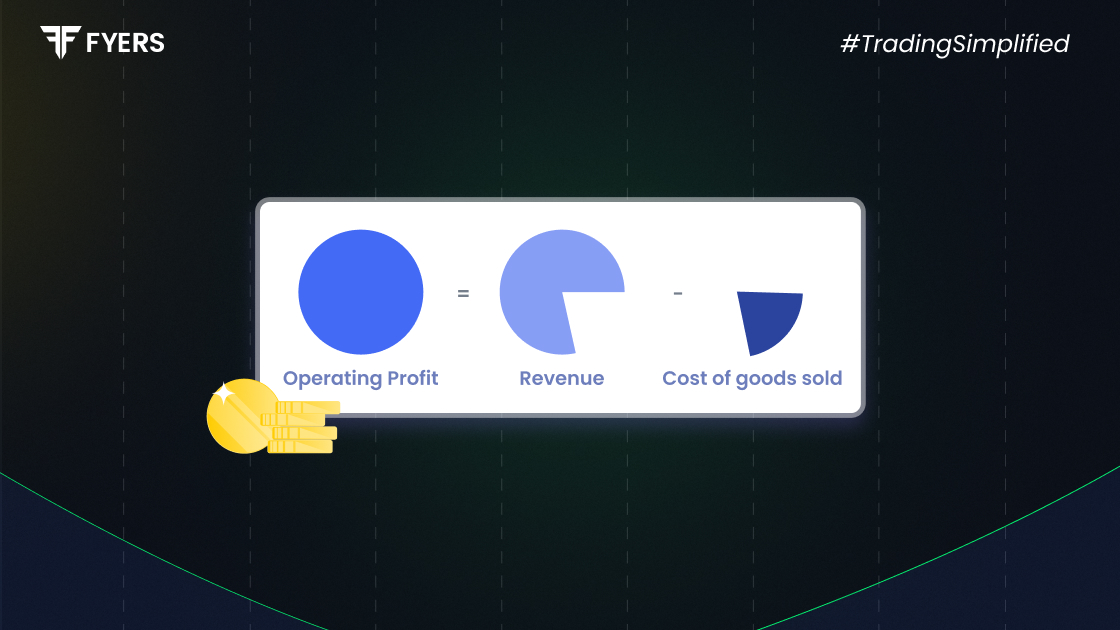

 21 Jul, 2025
21 Jul, 2025
 4 mins read
4 mins read

Every business, whether a start-up or an established corporation, needs to keep track of its profitability. One of the most reliable indicators of a company's performance is its operating profit. It shows how efficiently a business runs its core operations, without being affected by external factors such as taxes or interest payments.
If you want to understand a company’s financial health, operating profit is a good place to start. In this blog, we’ll explain what operating profit is, how to calculate it, and why it matters.
Operating profit is the income a company earns from its primary business activities. It does not include income from investments, interest earned, or expenses such as taxes and interest payments. Instead, it focuses purely on the profits generated from selling goods or services after deducting the direct costs of producing them and other operating expenses.
Operating profit is also known as operating income or EBIT (Earnings Before Interest and Taxes). It reflects the performance of a company’s core operations without the influence of its financing structure or tax strategies.
The basic operating profit formula is:
|
Operating Profit = Revenue – Operating Expenses |
Here’s what counts as operating expenses:
Cost of goods sold (COGS)
Staff salaries and wages
Rent and utilities
Depreciation
And what’s not included?
Interest payments
Taxes
Non-operating income or losses
Let’s look at an operating profit example using numbers:
Company ABC’s figures:
Revenue: ₹10,00,000
COGS: ₹4,00,000
Salaries: ₹2,00,000
Rent & Utilities: ₹50,000
Depreciation: ₹50,000
Operating Expenses = ₹7,00,000
Operating Profit = ₹10,00,000 – ₹7,00,000 = ₹3,00,000
We don’t subtract interest (₹30,000) or taxes (₹40,000) here - those come later when calculating net profit.
Once you've got the operating profit, the next step is to see how it stacks up against revenue. That’s where operating profit margin comes in.
|
Operating Profit Margin = (Operating Profit / Revenue) × 100 |
From our earlier example:
(₹3,00,000 / ₹10,00,000) × 100 = 30%
This means for every ₹1 the company earns, it keeps ₹0.30 as operating profit. The higher the margin, the more efficient the business is at running its operations.
Looking to boost operating profit? Here are some common ways businesses do it:
Increase revenue: Launch new products, expand into new markets, or up your marketing game.
Cut operating costs: Optimise logistics, reduce waste, or adopt cost-saving technology.
Enhance productivity: Train staff, streamline operations, or automate repetitive tasks.
Rework pricing: Adjust prices smartly to match demand without losing customers.
These strategies not only improve the bottom line but can also strengthen a business's long-term health. If you’re wondering how to improve operating profit, these are the first places to look.
Why is operating profit such a popular number among investors and managers?
Focuses on core business: Strips away noise like taxes or loans.
Easier comparisons: Lets you compare businesses within the same industry more fairly.
Management tool: Useful for budgeting, forecasting, and checking business health.
Investor-friendly: Gives a clear view of how well the business is being run.
But of course, no metric is perfect. Here are some limitations of operating profit:
Doesn’t include financing or tax costs: A company might look profitable from operations but still struggle due to high interest or tax bills.
Can be influenced by accounting choices: For example, changing how depreciation is calculated can affect the number.
Doesn’t show total profitability: It’s only one piece of the financial puzzle - not the whole picture.
So, while operating profit is a great tool, always look at it alongside other metrics like net profit, EBITDA, or cash flow.
Operating profit is like your company’s report card for its everyday performance. It strips away the fluff and shows whether your core business is actually making money.
Whether you're reading an annual report or running your own business, knowing how to calculate and understand this number is essential. And while it’s a powerful indicator, remember - it’s only part of the story.
It’s the profit a business earns from its regular operations before interest and taxes are deducted.
Use this formula:
Operating Profit Margin = (Operating Profit / Revenue) × 100
Generally, yes. A high margin means the business runs efficiently. But it’s best to compare margins across similar companies or industries.
Yes. It means the company’s core operations aren’t earning enough to cover their costs - a possible red flag for investors or lenders.
Calculate your Net P&L after deducting all the charges like Tax, Brokerage, etc.
Find your required margin.
Calculate the average price you paid for a stock and determine your total cost.
Estimate your investment growth. Calculate potential returns on one-time investments.
Forecast your investment returns. Understand potential growth with regular contributions.